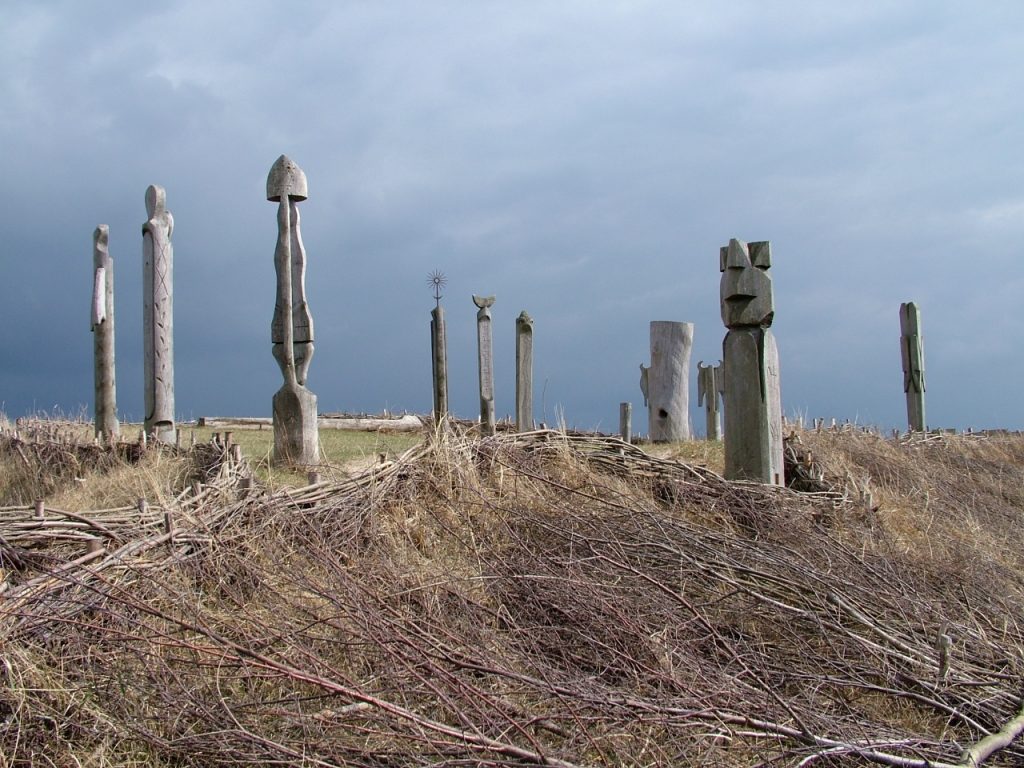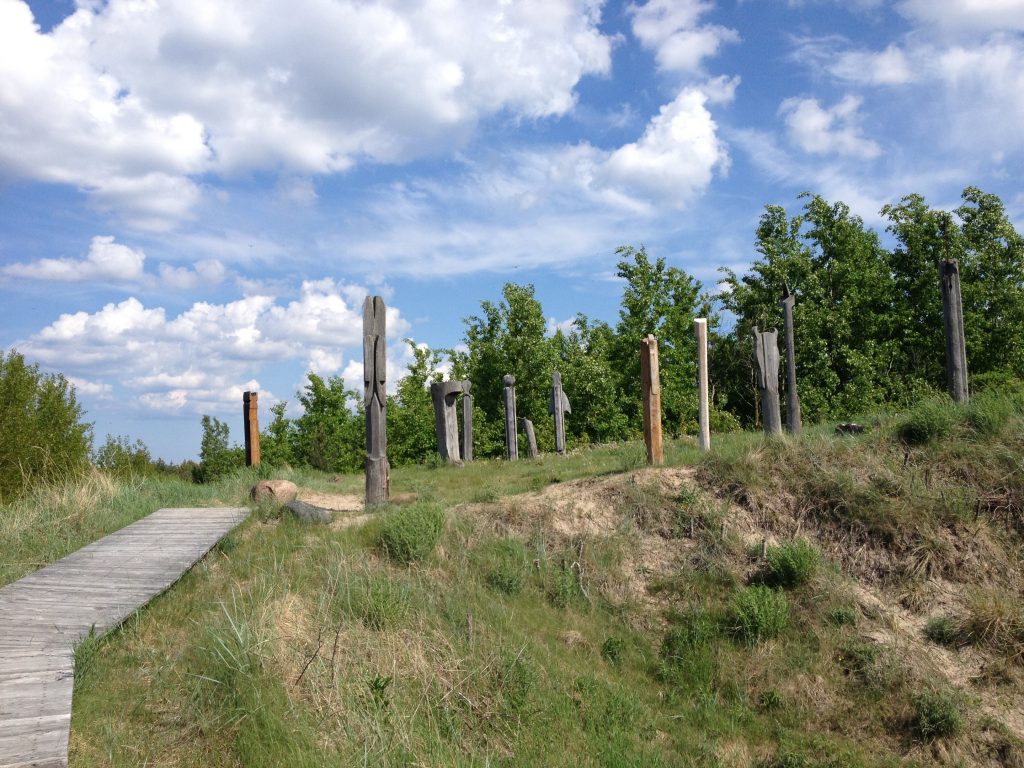Žemaičių Alka

263

0

1
0 out of 5
(0 reviews)
Žemaičių Alka in Šventoji is a reconstructed pagan sanctuary with a paleoastronomical observatory, established in 1998 on a dune near the “Energetikas” health center. It features 12 oak pillars dedicated to the Baltic gods and goddesses, which allow for the calculation of ancient calendar festivals. The site has become a place where traditional pagan celebrations, such as Rasos, Jorė, the Solstice, and other rituals rooted in ancient Baltic traditions, are held.
Info
-

Sculptures
-
Šventoji
-


The Žemaičių Alka is a unique place that preserves the ancient Baltic culture and astronomical knowledge. Established in 1998 on a dune at the end of Jonpaparčio Street, near the "Energetikas" health center, the sanctuary replicates the concept of a 15th-century paleoastronomical observatory that once existed on Birutės Hill.
The sanctuary features 12 oak pillars, creatively connected by folk artists to the Baltic gods and goddesses, such as Perkūnas, Aušrinė, Žemyna, Austėja, Ondenius, Patrimpus, Patulas, Velinas, Lada, Saulė, and Mėnulis. These pillars are positioned so that their shadows can be used to calculate the Baltic calendar celebrations, including Rasos, Jorė, Solstice, Shrove Tuesday, and others.
The creation of the Alka was based on the research of archaeologist Professor Vladas Žulkus and Dr. Rimutė Rimantienė. The design of the pillars was inspired by archaeological finds, including
a medieval pillar with a carved goddess mask discovered on Birutės Hill.
Žemaičių Alka is not only a place of cultural and historical value but also a site for ritual practices. Traditional pagan holidays such as Jorė (April 23), Rasos (June 22), Solstice (March 22), and Milda’s Day (May 13) are celebrated here, where symbolic rituals like the offering of amber dust are performed.
The surroundings of the sanctuary offer a spectacular landscape, reminiscent of the ancient Baltic way of life. It is believed that, in ancient times, a wooden church from the Elija settlement once stood here, later relocated by Kęsgaila to Birutės Hill.
The Alka, created with the initiative of the Žemaičių Society’s Palanga Branch, is not only a historical and cultural heritage site but also a living place where the preservation of pagan culture intertwines with tradition, nature, and ancient spirit.
Found a mistake?
Report

 Entertainment
Entertainment
 Food establishments
Food establishments





























 56.041011, 21.074546
56.041011, 21.074546
 Get directions
Get directions










